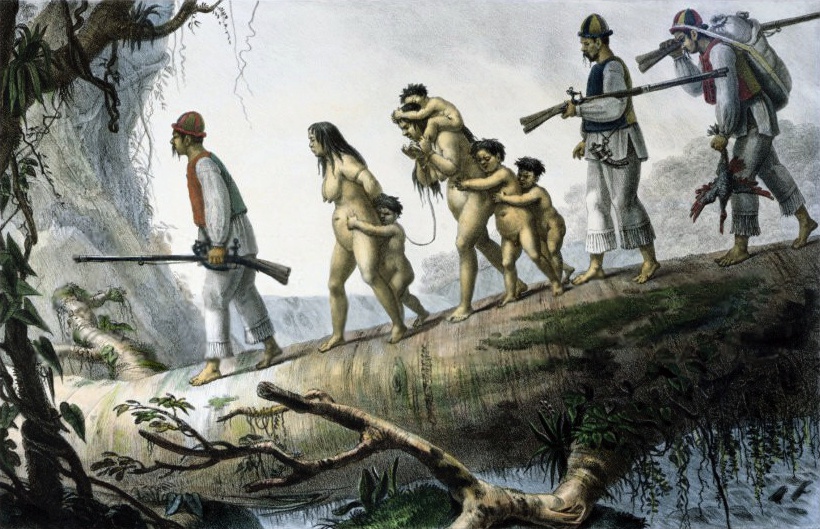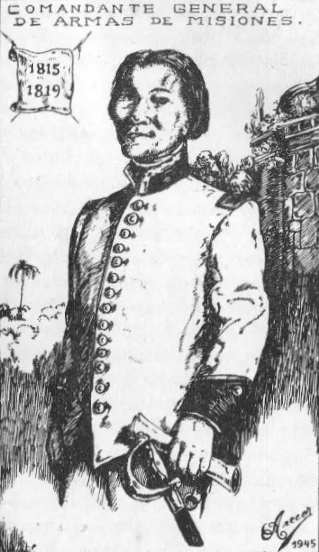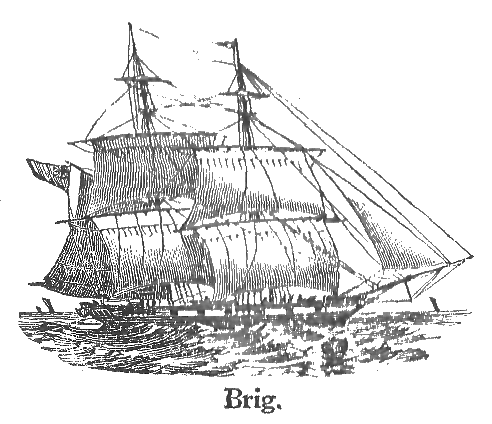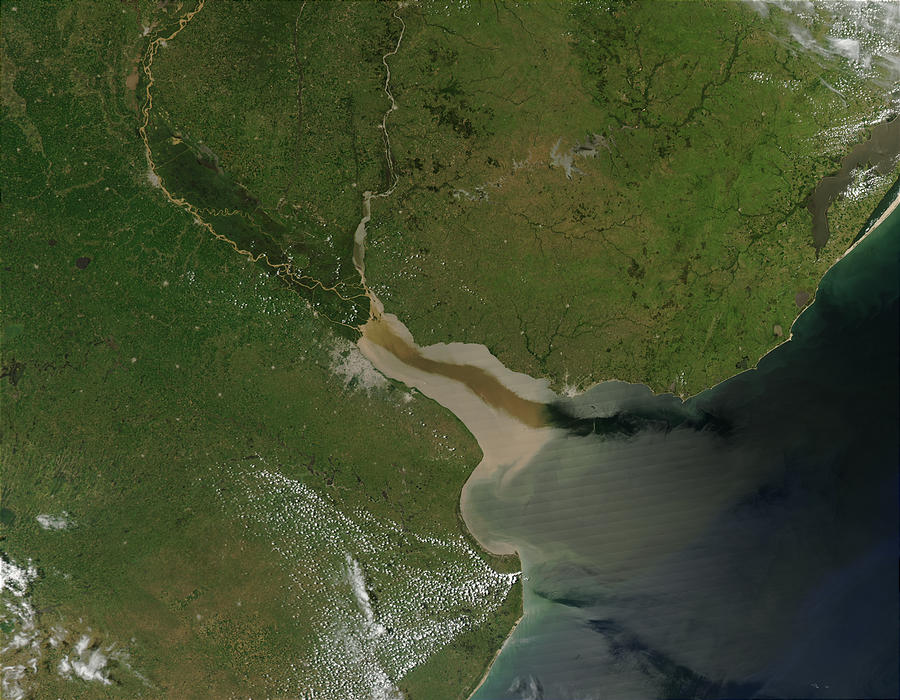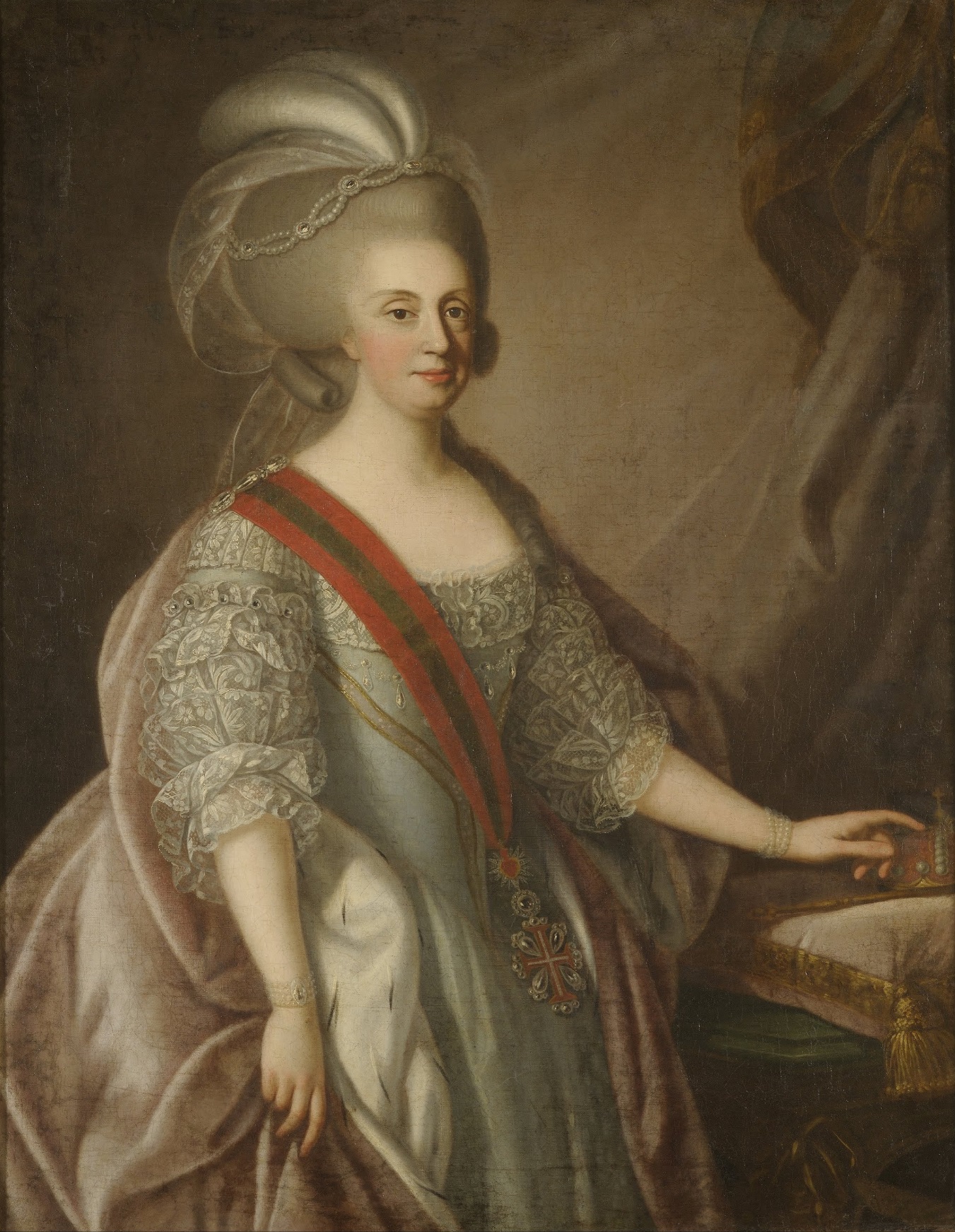|
Luso-Brazilian Invasion
The Portuguese conquest of the Banda Oriental was the armed-conflict that took place between 1816 and 1820 in the Banda Oriental, for control of what today comprises the whole of the Uruguay, Republic of Uruguay, the northern part of the Mesopotamia, Argentina, Argentine Mesopotamia and southern Brazil. The four-year armed-conflict resulted in the annexation of the Banda Oriental into the United Kingdom of Portugal, Brazil and the Algarves as the Kingdom of Brazil, Brazilian province of Cisplatina. The belligerents were, on one side, the "''Artiguistas''" led by José Gervasio Artigas and some leaders of other provinces that made up the Federal League, like Andrés Guazurary, and on the other, the troops of the United Kingdom of Portugal, Brazil and the Algarves, directed by Carlos Frederico Lecor. On the naval front, the conflict far exceeded the Río de la Plata and the Argentine coast to spread globally, as the Insurgent privateers, most notably under the flag of Buenos Aire ... [...More Info...] [...Related Items...] OR: [Wikipedia] [Google] [Baidu] |
Jean-Baptiste Debret
Jean-Baptiste Debret (; 18 April 1768 – 28 June 1848) was a French Painting, painter, who produced many valuable lithographs depicting the people of Brazil. Debret won the second prize at the 1798 Salon de Paris, Salon des Beaux Arts. Biography Debret studied at the Académie des Beaux-Arts, French Academy of Fine Arts, a pupil of the great Jacques-Louis David (1748–1825) to whom he was related. He accompanied David to Rome in the 1780s. His debut was at the Salon de Paris, Salon des Beaux Arts of 1798, where he got the second prize. He travelled to Brazil in March 1816 as a member of the so-called Missão Artística Francesa, French Artistic Mission, a group of bonapartist French artists and artisans bound to creating an arts and crafts lyceum in Rio de Janeiro (Escola Real de Artes e Ofícios) under the auspices of João VI of Portugal, King D. João VI and the Count of Barca. The lyceum later became the Academia Imperial de Belas Artes (Imperial Academy of Fine Arts) unde ... [...More Info...] [...Related Items...] OR: [Wikipedia] [Google] [Baidu] |
Andrés Guazurary
Andrés Guaçurary or Andrés Guazurarí, popularly known as Andresito (30 November 1778 – 1825) was a ''caudillo'' of the province of Misiones, present-day Argentina, being governor of said province between 1811 and 1822. He was one of the first federal caudillos of the United Provinces of the Río de la Plata and the only one of fully indigenous origin. He was born in the '' misión'' of Santo Tomé, Corrientes or São Borja to a Guarani family. He was taken as a foster child by José Gervasio Artigas who allowed him to sign as Andrés Artigas, to avoid being excluded by his Guarani origins. He served in the Army of the North of Manuel Belgrano, and in the Artiguista Army during the Portuguese conquest of the Banda Oriental, as General Commander. He died in Rio de Janeiro in 1825. Having achieved the rank of colonel during his service in the armed forces of the United Provinces, in April 2014 he was posthumously promoted to General of the Argentine Army The Argentine Army ... [...More Info...] [...Related Items...] OR: [Wikipedia] [Google] [Baidu] |
Buenos Aires
Buenos Aires, controlled by the government of the Autonomous City of Buenos Aires, is the Capital city, capital and largest city of Argentina. It is located on the southwest of the Río de la Plata. Buenos Aires is classified as an Alpha− global city, according to the Globalization and World Cities Research Network, GaWC 2024 ranking. The city proper has a population of 3.1 million and its urban area 16.7 million, making it the List of metropolitan areas, twentieth largest metropolitan area in the world. It is known for its preserved eclecticism, eclectic European #Architecture, architecture and rich culture, cultural life. It is a multiculturalism, multicultural city that is home to multiple ethnic and religious groups, contributing to its culture as well as to the dialect spoken in the city and in some other parts of the country. This is because since the 19th century, the city, and the country in general, has been a major recipient of millions of Immigration to Argentina, im ... [...More Info...] [...Related Items...] OR: [Wikipedia] [Google] [Baidu] |
Treaty Of Tordesillas
The Treaty of Tordesillas, signed in Tordesillas, Spain, on 7 June 1494, and ratified in Setúbal, Portugal, divided the newly discovered lands outside Europe between the Kingdom of Portugal and the Crown of Castile, along a meridian (geography), meridian west of the Portuguese Cape Verde, Cape Verde islands, off the west coast of Africa. That line of demarcation was about halfway between Cape Verde (already Portuguese) and the islands visited by Christopher Columbus on his first voyage (claimed for Castile and León), named in the treaty as names of Japan, Cipangu and Antillia (Cuba and Hispaniola). The lands to the east would belong to Portugal and the lands to the west to Castile, modifying an earlier papal bull, bull by Pope Alexander VI. The treaty was signed by Spain on , and by Portugal on . The other side of the world was divided a few decades later by the Treaty of Zaragoza, signed on , which specified the #Antimeridian: Moluccas and Treaty of Zaragoza, antimeridian to ... [...More Info...] [...Related Items...] OR: [Wikipedia] [Google] [Baidu] |
Rio De Janeiro
Rio de Janeiro, or simply Rio, is the capital of the Rio de Janeiro (state), state of Rio de Janeiro. It is the List of cities in Brazil by population, second-most-populous city in Brazil (after São Paulo) and the Largest cities in the Americas, sixth-most-populous city in the Americas. Founded in 1565 by the Portuguese people, Portuguese, the city was initially the seat of the Captaincy of Rio de Janeiro, a domain of the Portuguese Empire. In 1763, it became the capital of the State of Brazil, a List of states of the Portuguese Empire, state of the Portuguese Empire. In 1808, when the Transfer of the Portuguese Court to Brazil, Portuguese Royal Court moved to Brazil, Rio de Janeiro became the seat of the court of Queen Maria I of Portugal. She subsequently, under the leadership of her son the prince regent John VI of Portugal, raised Brazil to the dignity of a kingdom, within the United Kingdom of Portugal, Brazil and the Algarves, United Kingdom of Portugal, Brazil, and Algar ... [...More Info...] [...Related Items...] OR: [Wikipedia] [Google] [Baidu] |
Empire Of Brazil
The Empire of Brazil was a 19th-century state that broadly comprised the territories which form modern Brazil and Uruguay until the latter achieved independence in 1828. The empire's government was a Representative democracy, representative Parliamentary system, parliamentary constitutional monarchy under the rule of Emperors Pedro I of Brazil, Pedro I and his son Pedro II of Brazil, Pedro II. A Colonial Brazil, colony of the Kingdom of Portugal, Brazil became the seat of the Portuguese Empire in 1808, when the Portuguese Prince regent, later King Dom João VI of Portugal, John VI, fled from Napoleon's Invasion of Portugal (1807), invasion of Portugal and Transfer of the Portuguese Court to Brazil, established himself and his government in the Brazilian city of Rio de Janeiro. John VI later returned to Portugal, leaving his eldest son and heir-apparent, Pedro, to rule the Kingdom of Brazil as regent. On 7 September 1822, Pedro declared the independence of Brazil and, after waging ... [...More Info...] [...Related Items...] OR: [Wikipedia] [Google] [Baidu] |
Insurgent Privateers
Insurgent privateers () were private armed vessels recruited by the insurgent governments during the Spanish American wars of independence to destroy Spanish trade and capture Spanish merchant vessels. Privateering started early in the war in 1812, but large scale deployment of warships started between 1816 and 1821, most notably under the flag of Buenos Aires and flag of Artigas. Between 1821 and 1829 these privateers sailed under the flags of Mexico and Colombia (privateers coming from Cartagena, Colombia, were referred to as "Carthaginians"). The main motivation of these insurgent privateers were to earn money but their political motivation was scant. They captured merchant vessels and slave ships to seize loot but they refused to fight against the Spanish Navy. After the War of 1812 privately armed vessels came from North America, mostly from Baltimore. More than one hundred ships set sail from the United States, with more than three thousand American sailors and captains to ... [...More Info...] [...Related Items...] OR: [Wikipedia] [Google] [Baidu] |
Río De La Plata
The Río de la Plata (; ), also called the River Plate or La Plata River in English, is the estuary formed by the confluence of the Uruguay River and the Paraná River at Punta Gorda, Colonia, Punta Gorda. It empties into the Atlantic Ocean and forms a funnel-shaped indentation on the southeastern coastline of South America. Depending on the geographer, the Río de la Plata may be considered a river, an estuary, a gulf, or a marginal sea. If considered a river, it is the widest in the world, with a maximum width of . The river is about long and widens from about at its source to about at its mouth. It forms part of Argentina–Uruguay border, the border between Argentina and Uruguay. The name Río de la Plata is also used to refer to the populations along the estuary, especially the main Port city, port cities of Buenos Aires and Montevideo, where Rioplatense Spanish is spoken and tango culture developed. The coasts of the river are the most densely populated areas of Urugua ... [...More Info...] [...Related Items...] OR: [Wikipedia] [Google] [Baidu] |
Cisplatina
Cisplatina () was a Brazilian province in existence from 1821 to 1828 created by the Luso-Brazilian invasion of the Banda Oriental. From 1815 until 1822 Brazil was a constituent kingdom of the United Kingdom of Portugal, Brazil and the Algarves. After the independence of Brazil and the formation of the Empire of Brazil the Cisplatina province remained part of it. In 1828, following the Preliminary Peace Convention, the Cisplatina province became independent as Uruguay. Name The name comes from the Latin prefix "cis" meaning "on this side of" and "platina", a reference to the Río de la Plata. Thus, the name Cisplatina means "province on the same side of the Río de la Plata", alluding to the fact that, from the Brazilian perspective, the region is located on the same side of the river as Brazil, ''cf.'' Cisalpine. The Argentines called the region Banda Oriental, short for Banda Oriental del Río Uruguay ("the strip to the east of the Uruguay River"). History The Banda Orien ... [...More Info...] [...Related Items...] OR: [Wikipedia] [Google] [Baidu] |
Kingdom Of Brazil
The Kingdom of Brazil () was a constituent kingdom of the United Kingdom of Portugal, Brazil, and the Algarves. Creation The legal entity of the Kingdom of Brazil was created by a law issued by John VI of Portugal, Prince Regent John of Portugal, Prince of Brazil, Duke of Braganza, in name of his mother, Queen Maria I of Portugal, on 16 December 1815, which elevated the State of Brazil to the rank of a Kingdom within the United Kingdom of Portugal, Brazil, and the Algarves. By a decree issued on 22 April 1821 ahead of his departure from Brazil to Portugal, King John VI appointed his firstborn son and heir, Pedro I of Brazil, Prince Pedro of Braganza, the Prince Royal of the United Kingdom, as Prince Regent of the Kingdom of Brazil, with delegated powers to discharge the "general government and entire administration of the Kingdom of Brazil" as the King's placeholder, thus granting the Kingdom of Brazil a devolved administration within the United Kingdom. Dissolution On 7 Sep ... [...More Info...] [...Related Items...] OR: [Wikipedia] [Google] [Baidu] |
Mesopotamia, Argentina
The Mesopotamia or Región Mesopotámica is the humid and verdant area of northeast Argentina, comprising the provinces of Misiones Province, Misiones, Entre Ríos Province, Entre Ríos, and Corrientes Province, Corrientes. The landscape and its characteristics are dominated by two rivers: the Paraná River, Paraná and the Uruguay River, Uruguay.Lewis, p. 2 When Spanish settlers came to the area, the two parallel rivers and the lush area between them drew comparisons to Mesopotamia (Ancient Greek, Greek: Μεσοποταμία "land between rivers") in modern-day Iraq, and it was decided that the Argentine region be named after the Iraqi region. The region shares many of its ecological features with neighboring regions of Argentina and with parts of Brazil, Paraguay, and Uruguay. Mesopotamia has some of the most popular tourist attractions in Argentina, mainly the Iguazu Falls, Iguazú Falls, the Iguazú National Park, and the Society of Jesus, Jesuit mission stations in Misio ... [...More Info...] [...Related Items...] OR: [Wikipedia] [Google] [Baidu] |
Banda Oriental
Banda Oriental (Eastern Bank), or more fully Banda Oriental del Río Uruguay, was the name of the South American territories east of the Uruguay River and north of Río de la Plata that comprise the modern nation of Uruguay, the modern state of Rio Grande do Sul, Brazil, and part of the modern state of Santa Catarina, Brazil. It was the easternmost territory of the Viceroyalty of the Río de la Plata. After decades of disputes over the territories, the 1777 First Treaty of San Ildefonso settled the division between the Spanish Empire and the Portuguese Empire: the southern part was to be held by the Spanish Viceroyalty of the Río de la Plata and the northern territories by the Portuguese ''Capitania de São Pedro do Rio Grande do Sul'' (). The Banda Oriental was not a separate administrative unit until the ''de facto'' creation of the Provincia Oriental () by José Gervasio Artigas in 1813 and the subsequent decree of the Supreme Director of the United Provinces of the Río de ... [...More Info...] [...Related Items...] OR: [Wikipedia] [Google] [Baidu] |
